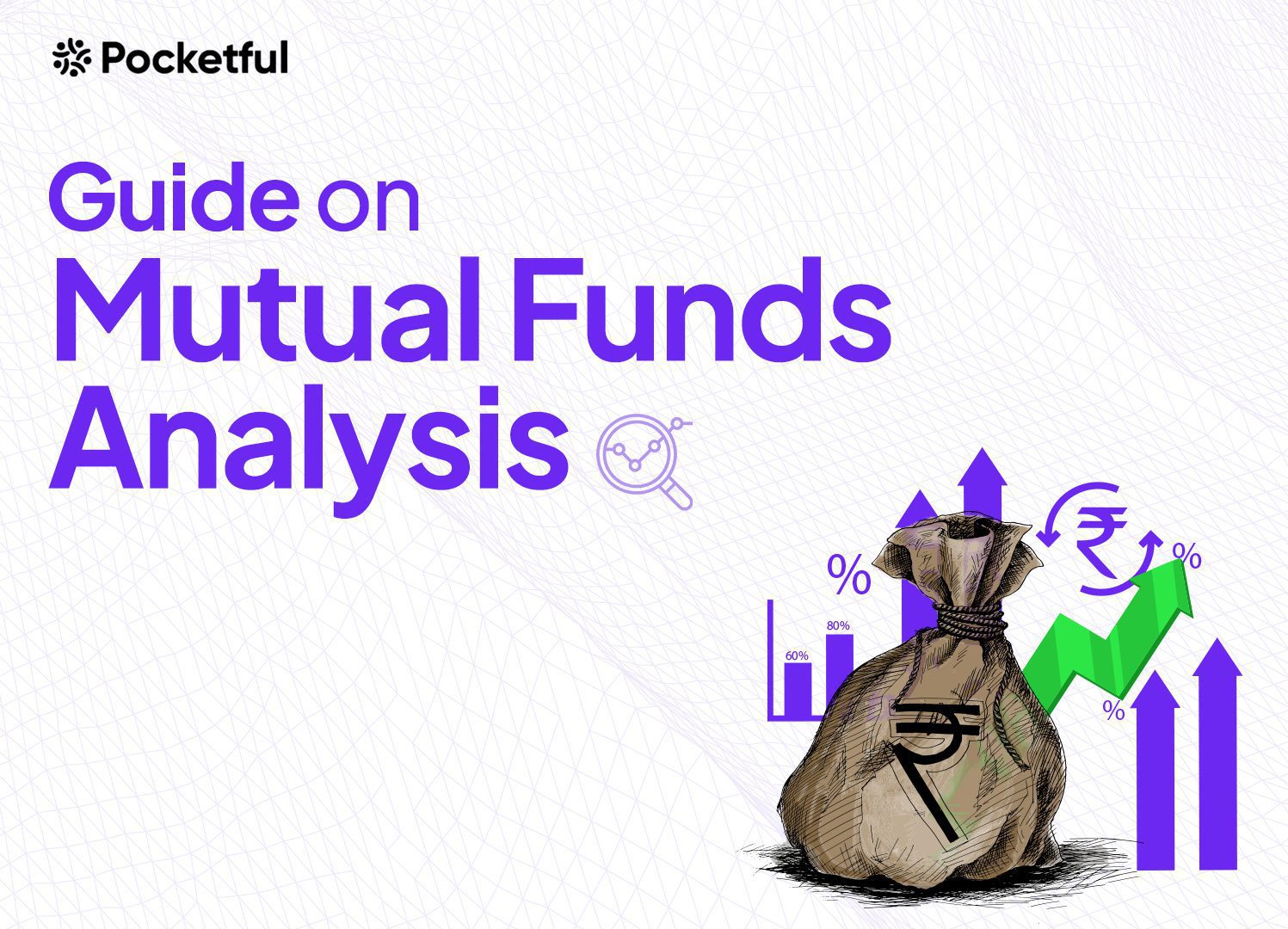| Type | Description | Contributor | Date |
|---|---|---|---|
| Post created | Pocketful Team | Mar-13-24 |
Read Next
- What is the 15*15*15 Rule of Mutual Fund Investing?
- Mutual Fund Factsheet: Definition And Importance
- XIRR Vs CAGR: Investment Return Metrics
- Arbitrage Mutual Funds – What are Arbitrage Funds India | Basics, Taxation & Benefits
- Hybrid Mutual Funds – Definition, Types and Taxation
- Top AMCs in India
- Active or Passive Mutual Funds: Which Is Better?
- Liquid Funds Vs Ultra Short Fund: Which One Should You Choose?
- Debt Mutual Funds: Meaning, Types and Features
- Equity Mutual Funds: Meaning, Types & Features
- What are Small Cap Mutual Funds? Definition, Advantages, and Risks Explained
- What is PSU Index? Performance, Comparison, Benefits, and Risks Explained
- Bandhan Long Duration Fund NFO: Objective, Benefits, Risks, and Suitability Explained
- Smart Beta Funds: Characteristics, Factors, Benefits, and Limitations
- The Rise of ESG Funds: Overview, Growth, Pros, Cons, and Suitability
- Mutual Funds vs Direct Investing: Differences, Pros, Cons, and Suitability
- NFO Alert: PGIM India Large & Mid Cap Fund
- ELSS Funds: 3 Years Lock-In Worth It?
- Regular vs Direct Mutual Funds: Make The Right Investment Decision
- Decoding Credit Risk Funds In India
- Blog
- a comprehensive guide on mutual fund analysis quantitative and qualitative factors explained
A Comprehensive Guide on Mutual Fund Analysis: Quantitative and Qualitative Factors Explained

Feeling lost in the maze of mutual funds, unsure how to choose the right fund for your financial goals, and worried about making the wrong investment decision.
We understand that selecting the right fund can feel daunting, but not anymore!
Today’s blog will equip you with the knowledge to analyse mutual funds confidently. Let us delve into the quantitative and qualitative factors to explore mutual funds.
Mutual Funds Overview
Mutual funds collect money from numerous investors to invest in a diversified portfolio of stocks, bonds, or other assets. These funds are managed and curated by professional fund managers and hence become suitable for investors with less time and expertise to manage their portfolios. When you invest in mutual funds, units of the mutual fund are allocated to you based on NAV (Net Asset Value), which reflects the net value of the securities the fund manager chooses.
Mutual funds in India are established as a Trust under the Indian Trust Act, 1882, under SEBI (Mutual Funds) Regulations, 1996.
Mutual funds are considered ideal for investors who do not have sufficient knowledge of investing in stock markets and wish to start their financial journey with a small amount. These funds offer investors various investment options like shares, bonds, debentures, real estate and money market instruments.
Now that we know the impact of mutual funds on your portfolio, we will dive deeper into analysing a mutual fund. The analysis involves looking beyond its current price and a multi-faceted approach, combining quantitative and qualitative factors.
Let us analyse both of these factors in detail.

Mutual Funds Quantitative Factors
Standard Deviation
This measures the volatility of the fund’s returns. It shows how much the fund’s return deviates from its average return over a specific period. A higher standard deviation indicates a more volatile fund, indicating that the returns fluctuate more widely.
Sharpe Ratio
It is a statistical measure that quantifies the volatility of a fund’s returns. It depicts how much extra return you are getting for the additional risk you are taking compared to risk-free investment security like government bonds.
A higher Sharpe ratio is considered better and indicates that the investment is generating more robust returns relative to its level of risk.
Formula
SR = (Average Return of Investment – Risk-free Rate of Return)/Standard Deviation of Returns.
Sortino Ratio
This is similar to the Sharpe Ratio. However, the Sortino ratio only considers downside risk in the volatility calculation. This can be a more relevant measure for investors more concerned about losing money than missing out on gains.
Formula
Sortino Ratio = (Average realised return – Risk-free Rate of Return)/Target downside deviation.
A higher Sortino ratio indicates a better risk-adjusted return. This means that the investment is generating more return per unit of downside risk.
Beta
This measures the volatility of the fund relative to its benchmark. A beta of 1 indicates that the fund’s returns are expected to align with the benchmark.
To calculate beta, you need the historical returns of the mutual fund and its corresponding benchmark index over the same period. For the mutual funds and benchmark index, subtract the risk-free rate from each return to get the excess return. The risk-free rate represents the return you expect from an investment with no risk. Now, calculate the covariance between the mutual fund’s excess returns and the benchmark index’s excess returns and the standard deviation.
Note that, covariance measures the tendency of two variables to move together.
Formula
Beta = Covariance/Standard Deviation
Internal Rate of Return (IRR)
IRR is a discount rate that makes the net present value (NPV) of the fund’s cash flows equal to zero. To simplify, IRR shows the expected annualized growth rate of an investment.
A higher IRR indicates a more profitable investment.
Jensen’s Alpha
Jensen’s Alpha is used to assess the abnormal return of an investment or portfolio compared to its expected return based on the Capital Asset Pricing Model (CAPM). In simpler terms, it is a score that tells you how well an investment did compared to what was expected based on its risk level.
Formula
Jensen’s Alpha = Portfolio Return – [Risk-free Rate + Portfolio Beta*(Market Return – Risk-Free Rate)].
A positive alpha indicates outperformance, while a negative alpha suggests underperformance.
Portfolio Turnover Ratio
This measures how often the respective fund manager buys and sells securities. A higher turnover ratio depicts higher transaction costs and lower net returns.
Portfolio turnover can be calculated by dividing the total sales proceeds from securities sold with the average monthly assets of the fund.
A high portfolio turnover indicates that the fund manager is frequently buying and selling securities.
Treynor Ratio
Treynor’s ratio is a performance metric used to assess the risk-adjusted return of a portfolio. It measures the excess return generated per unit of systematic risk providing insights into how efficiently a portfolio compensates investors for assuming market-related risks.
A higher Treynor Ratio signifies a portfolio’s ability to generate superior returns relative to its inherent market risk.
Formula
Treynor Ratio = (Portfolio Return – Risk-free Rate)/Portfolio Beta
A higher Treynor ratio indicates better performance of the fund.
Downside Coverage Ratio
The downside coverage ratio is used to measure an investment’s potential to protect against losses during market downturns. It is a trade-off between downside protection and upside participation.
The two components of Downside Coverage Ratio are,
- Downside Capture Ratio – measures how much an investment falls relative to the market during downturns.
- Upside Capture Ratio – measures how much an investment gains relative to the market during uptrends.

Mutual Funds Qualitative Factors
Qualitative factors are subjective aspects that can impact the future performance and overall stability of the mutual fund.
Below mentioned are some of the key qualitative factors that you can consider when analysing mutual funds.
Experience of the Fund Manager
A fund manager’s experience and past performance can offer insights into their investment philosophy, risk management skills, and the ability to generate consistent returns. Looking for fund managers with a long and successful track record is suggested, especially during volatile market conditions.
Reputation of Asset Management Company
The AMC’s reputation, financial stability, and track record in maintaining different types of mutual funds can be indicative of its commitment to investor interests and its ability to provide quality investment products.
Portfolio Composition and Diversification
Analyse the holdings of the fund’s portfolio to understand the asset allocation, sector weightage, and diversification across different asset classes. This will help you assess the level of risk linked with the fund. Additionally, evaluate the risk management practices of the AMC to understand how they mitigate risks and protect investor’s capital.
Peer Comparison
Peer comparison is an important step in analysing mutual funds and identifying suitable investment options. Once you have identified the peer group, compare the funds using appropriate metrics like historical returns of the funds, management fees, and expense ratio. Also evaluate the risk alongside returns.
Exit Load
An exit load is a charge mutual fund companies impose when investors redeem or sell their units within a specific period after buying them. It encourages investors to adopt a long-term investment horizon.
Exit load is a percentage of the redemption amount calculated on the NAV of the units being redeemed. Also, different funds may have other exit load structures and some funds may not charge any exit load.

Read Also: Types of Mutual Funds in India
Conclusion
A comprehensive mutual fund analysis involves evaluating various key factors to determine if the fund aligns with your investment goals and risk tolerance. Remember to not solely rely on past performance.
Market conditions can change and past returns do not guarantee future success. Also, avoid investing in funds that exceed your level of risk and in case of any concerns or uncertainties, consult a financial advisor for personalised guidance.
Frequently Asked Questions (FAQs)
Why should I consider investing in mutual funds?
Mutual funds offer diversification, professional management and access to several asset classes with less initial investment amount.
How do I choose the right mutual fund?
Analyse your investment goals, risk tolerance, and time horizon. Deep research and analysis is needed to understand the fund’s performance.
What are expense ratios?
The expense ratio is the annual fee expressed as a percentage of a fund’s average net assets.
Can I lose money in Mutual Funds?
Yes, mutual funds are subject to market risk and fluctuations and investors may experience losses.
How often should I review my mutual fund investments?
Regularly review your portfolio and ensure that it aligns with your goals. However, avoid making impulsive decisions depending on short-term market movements.
Disclaimer
The securities, funds, and strategies discussed in this blog are provided for informational purposes only. They do not represent endorsements or recommendations. Investors should conduct their own research and seek professional advice before making any investment decisions.
Article History
Table of Contents
Toggle